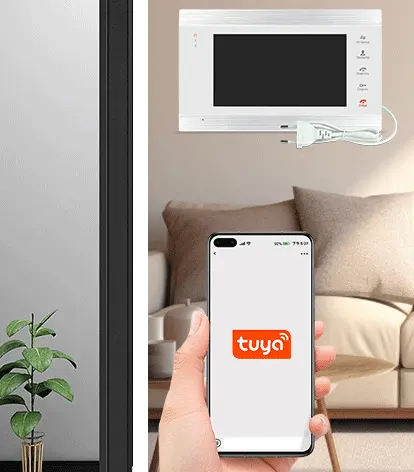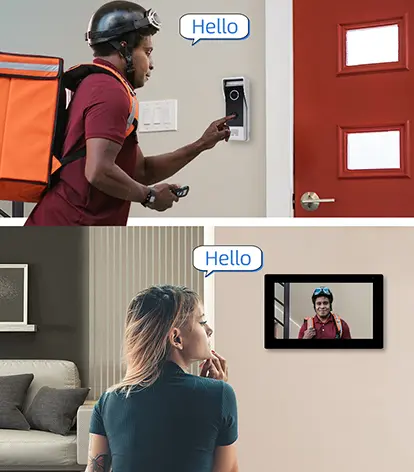01
Understanding the Distinction Between a Doorbell and an Intercom
2025-02-18
When it comes to home security and convenience, the terms "doorbell" and "intercom" are often used interchangeably. However, there are distinct differences between the two that are important to understand. In this blog, we will delve into the functionalities, benefits, and uses of doorbells and intercoms to provide clarity on their differences and help you make an informed decision for your home.
Doorbell: A Simple Notification System(normally we call it Dingdong Bell)
Let's start by exploring the concept of a doorbell. A doorbell is a simple device that is installed near the entrance of a home or building. Its primary function is to alert the occupants when someone is at the door. When a visitor presses the button, a chime or ringing sound is emitted inside the house, signaling that someone is seeking entry. Traditional doorbells are often wired to the home's electrical system, while recent 10 years modern versions may be wireless and connected to a smart phone app remote control.
The key benefit of a doorbell is its simplicity and ease of use. It serves as a basic means of communication between the visitor and the occupants, allowing for a prompt response to the door. Doorbells are widely used in residential settings and are an essential component of home security and convenience.
Intercom: Enhanced Communication and Control
On the other hand, an intercom system offers a more advanced level of communication and control. In addition to providing a notification when someone is at the door, an intercom allows for two-way audio and, in some cases, video communication between the visitor and the occupants. This means that not only can the occupants hear the visitor, but they can also speak to them and even see them through a connected camera.
Intercom systems are often integrated with access control features, allowing the occupants to remotely unlock the door for authorized visitors. This added layer of security and convenience makes intercoms a popular choice for both residential and commercial properties. In larger buildings or gated communities, intercoms are used to screen visitors and grant access to authorized individuals, enhancing overall security and privacy.
Distinguishing Features and Use Cases
Now that we have outlined the basic functionalities of doorbells and intercoms, let's delve into their distinguishing features and use cases to further clarify the differences between the two.
1. Communication Capabilities:
- Doorbell: Provides one-way notification only, with no direct communication between the visitor and the occupants.
- Intercom: Enables two-way audio and, in some cases, video communication, allowing for direct interaction and conversation with the visitor.
2. Security and Privacy:
- Doorbell: Offers basic security by alerting the occupants to the presence of a visitor.
- Intercom: Enhances security by enabling visual verification of the visitor and the ability to control access to the property.
3. Use Cases:
- Doorbell: Ideal for single-family homes and small residential properties where basic notification of visitors is sufficient.
- Intercom: Suited for larger homes, multi-unit buildings, and commercial properties where enhanced communication, access control, and security are desired.
Making the Right Choice for Your Home
When considering whether to install a doorbell or an intercom system in your home, it's essential to assess your specific needs and priorities. If you live in a single-family home and prioritize simplicity and cost-effectiveness, a traditional doorbell may suffice for your needs. However, if you value advanced communication, access control, and security features, an intercom system could be the ideal solution for your home.
In conclusion, while both doorbells and intercoms serve the fundamental purpose of facilitating communication between visitors and occupants, their differences lie in the level of functionality, communication capabilities, and security features they offer. By understanding these distinctions, you can make an informed decision to enhance the convenience and security of your home.
Whether you opt for a classic doorbell or a sophisticated intercom system, prioritizing the safety and comfort of your household is paramount. With the right choice in place, you can welcome visitors with confidence and control, knowing that your home is equipped with the appropriate communication and security solutions.



